Abstract
A longitudinal epidemiological study was carried out in a hyperendemic malarious area of East Pakistan. Transmission of malaria was observed with two peaks, one in the premonsoon period, the other in the pre-winter period. New infections occurred in 51.7% of the infants surveyed who were 2 months old or under when first examined: there were frequent superinfections. The maternal immunity passively transferred to the infants did not play a significant role in restricting the development of the asexual erythrocytic stage or that of gametocytes, as indicated by the fact that the average parasite density and the gametocyte counts were highest in the 0-2-month age group and declined with increasing age. Mosquitos were collected for identification and for dissection to determine parity, the sporozoite rate, the vectorial capacity, and other basic indices. An. minimus was the principal vector, but An. leucosphyrous was also found to be positive.
Full text
PDF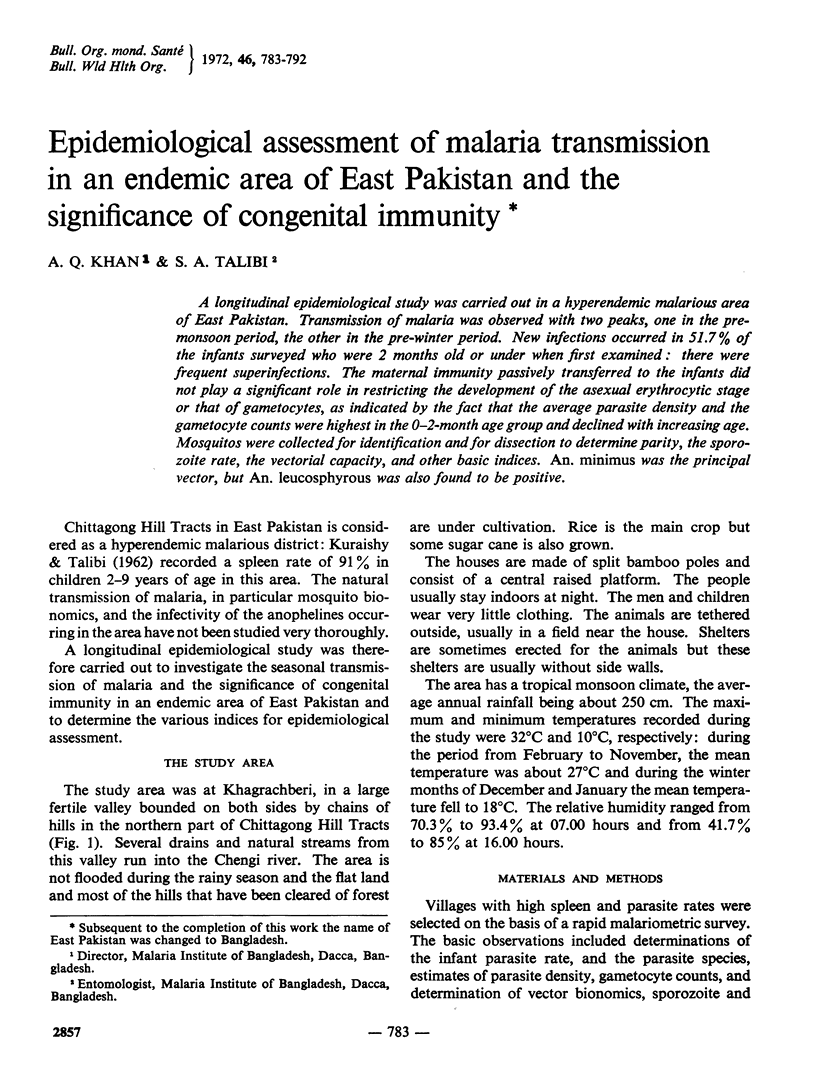
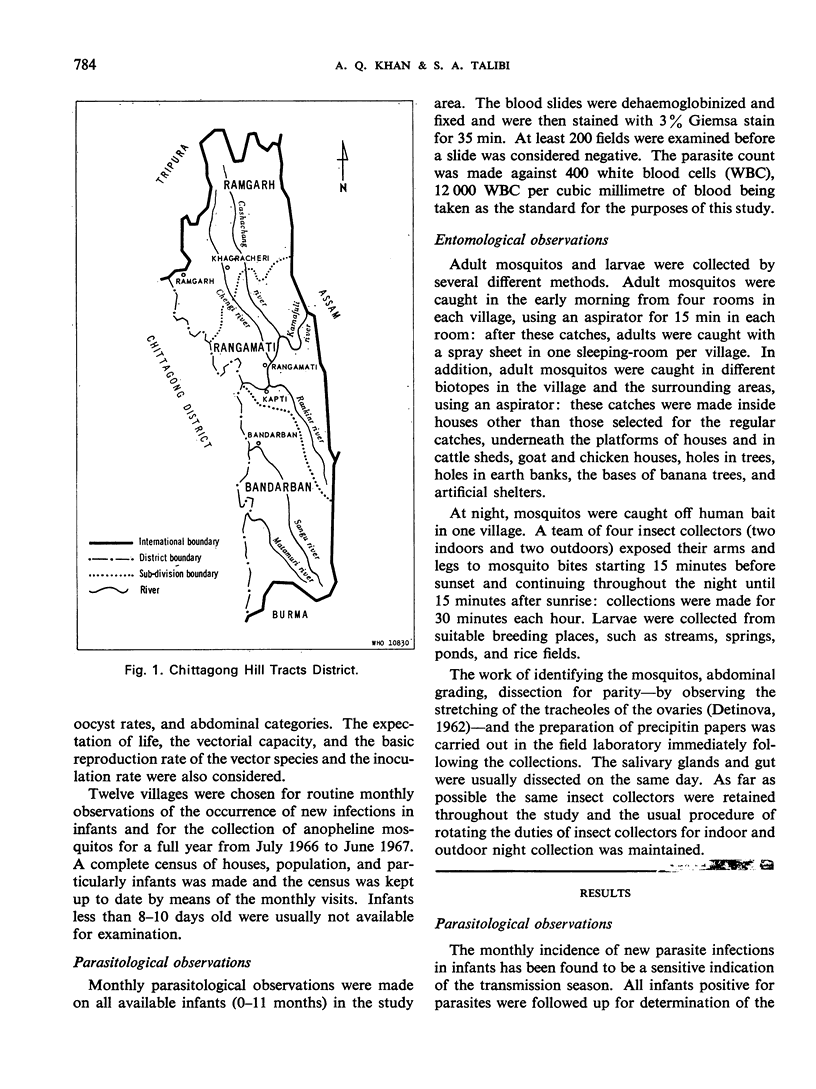
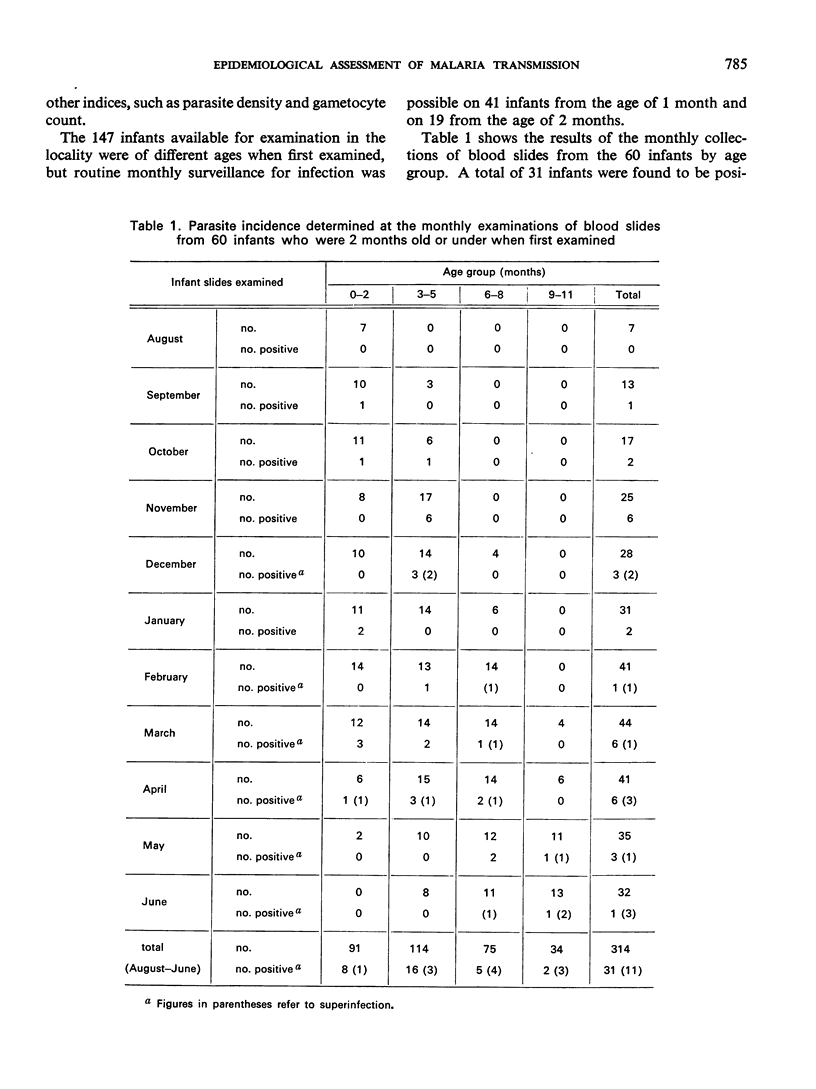
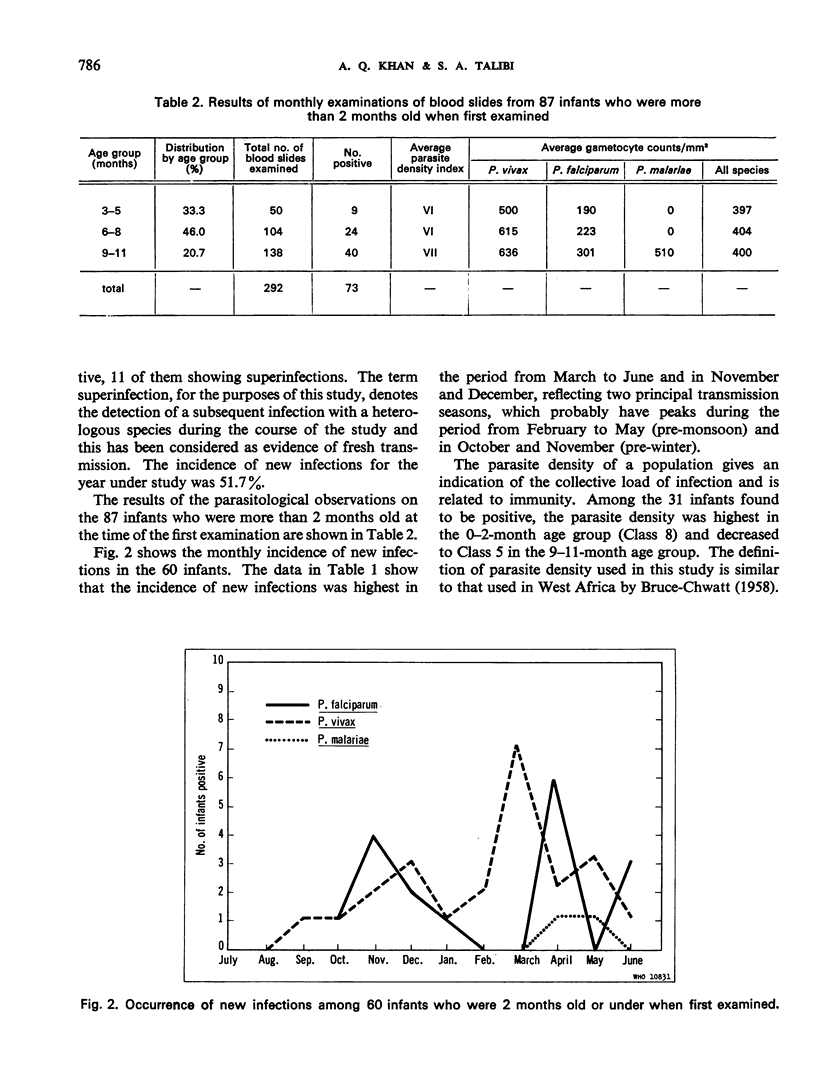
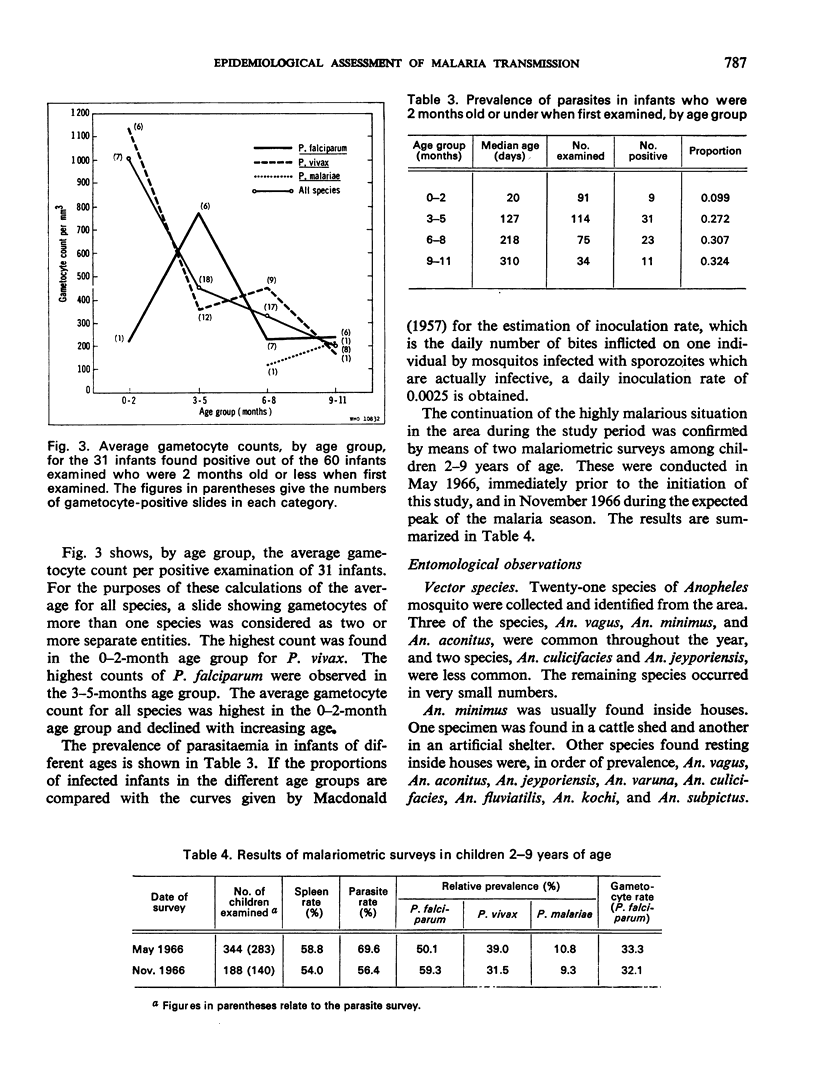
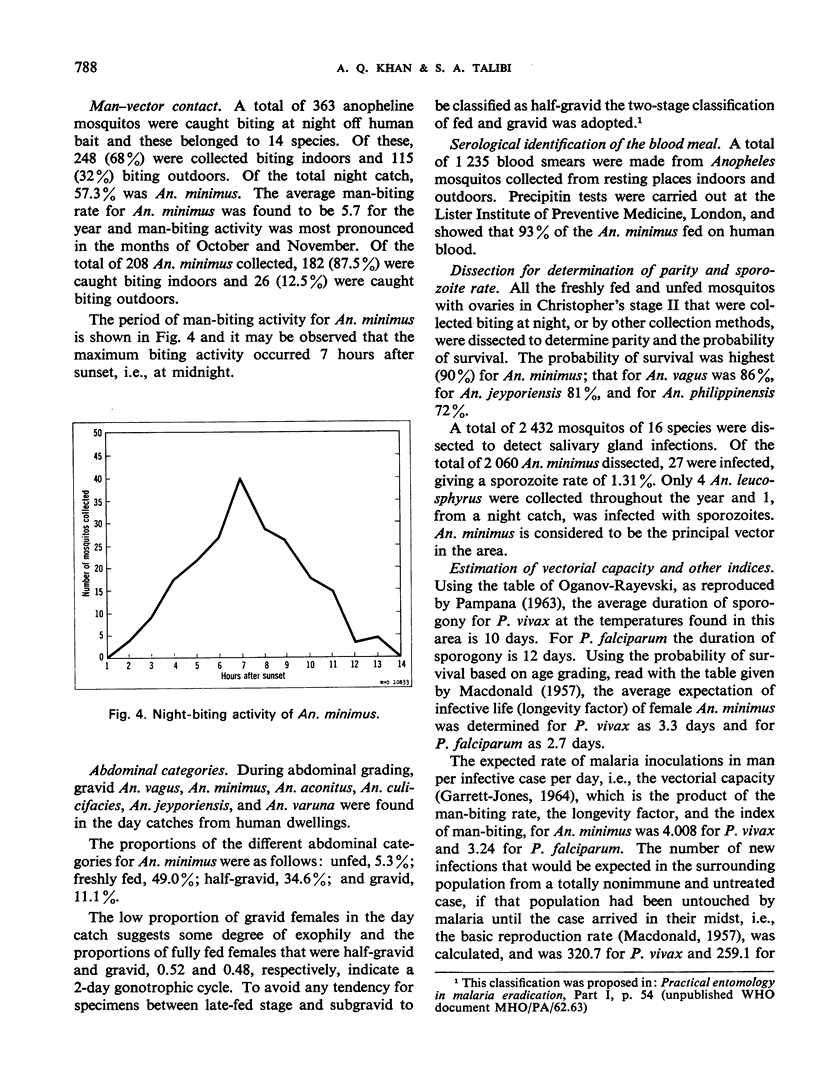
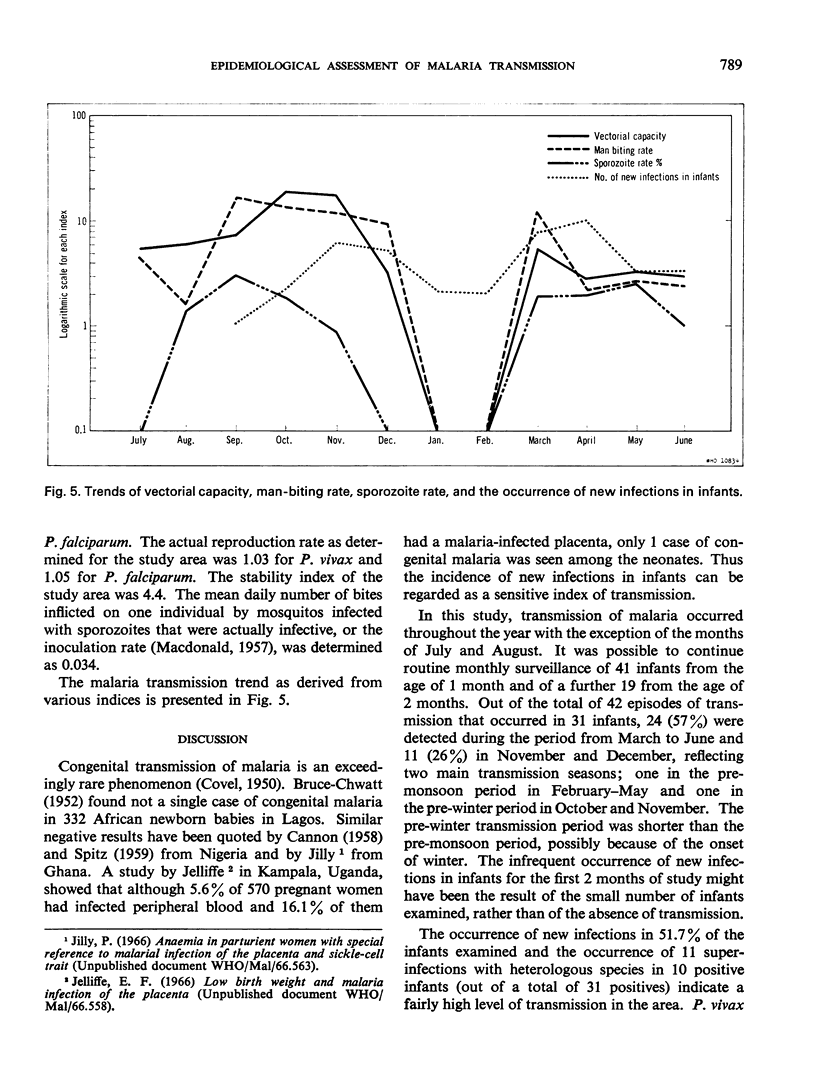
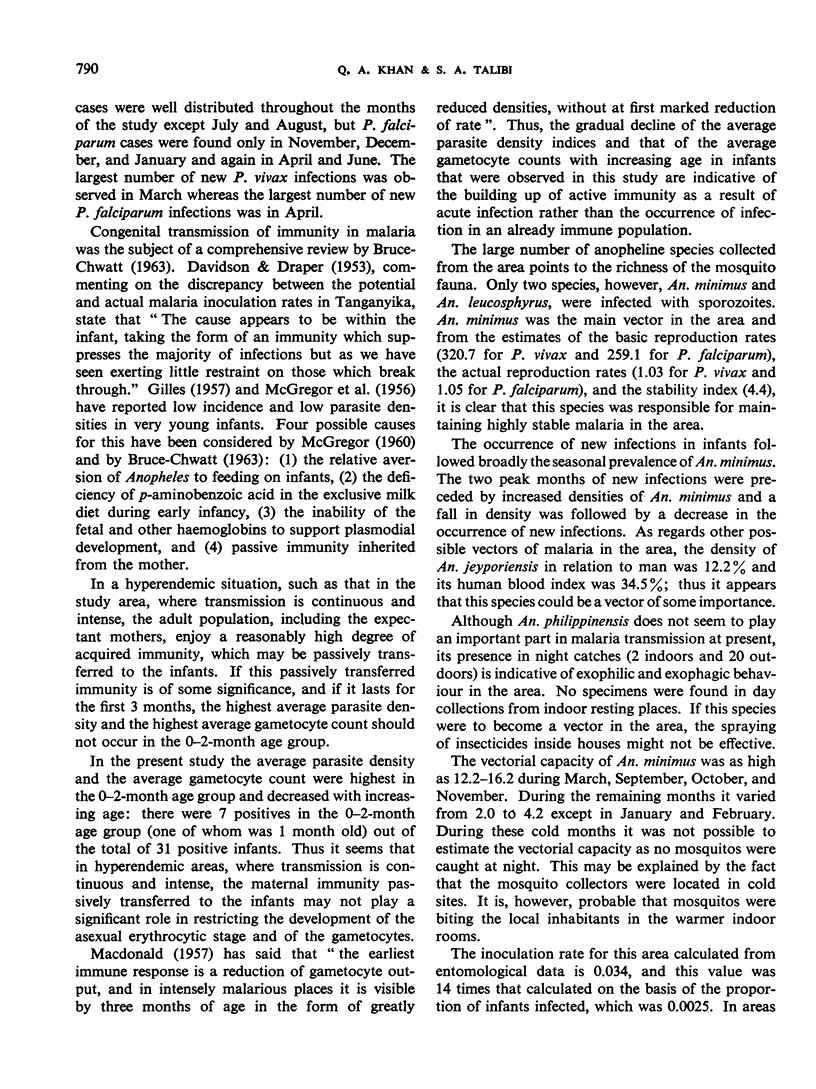
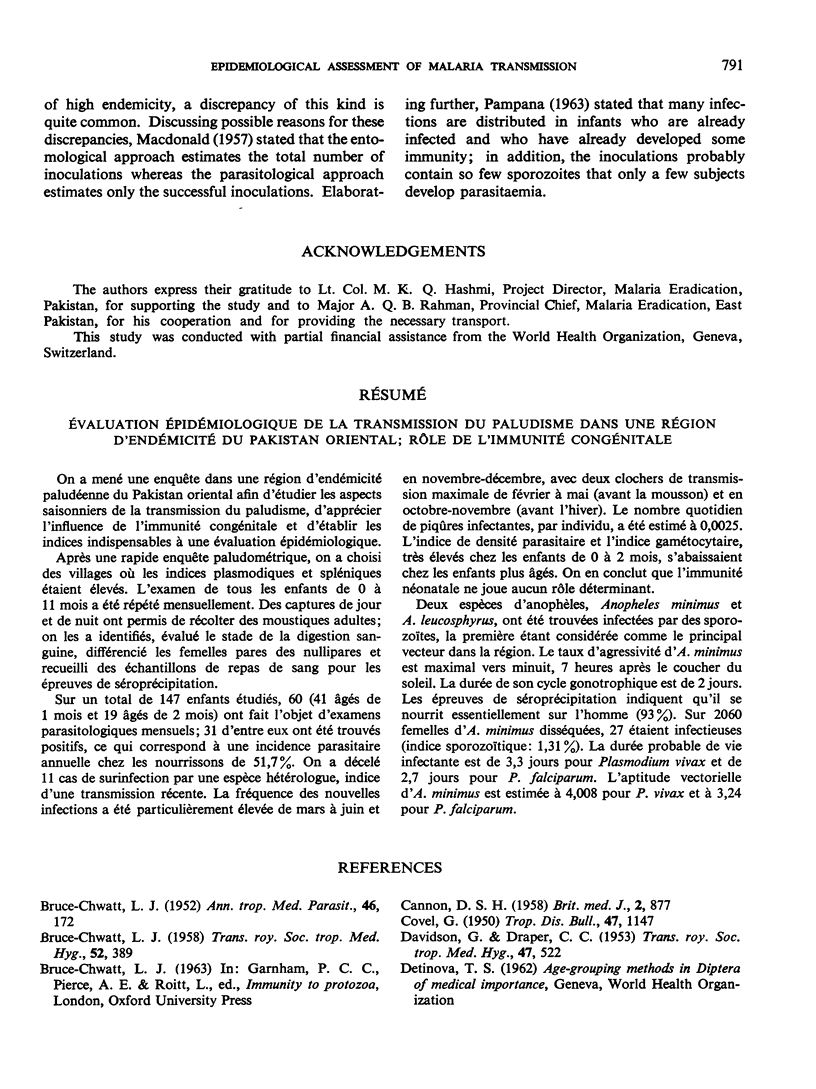
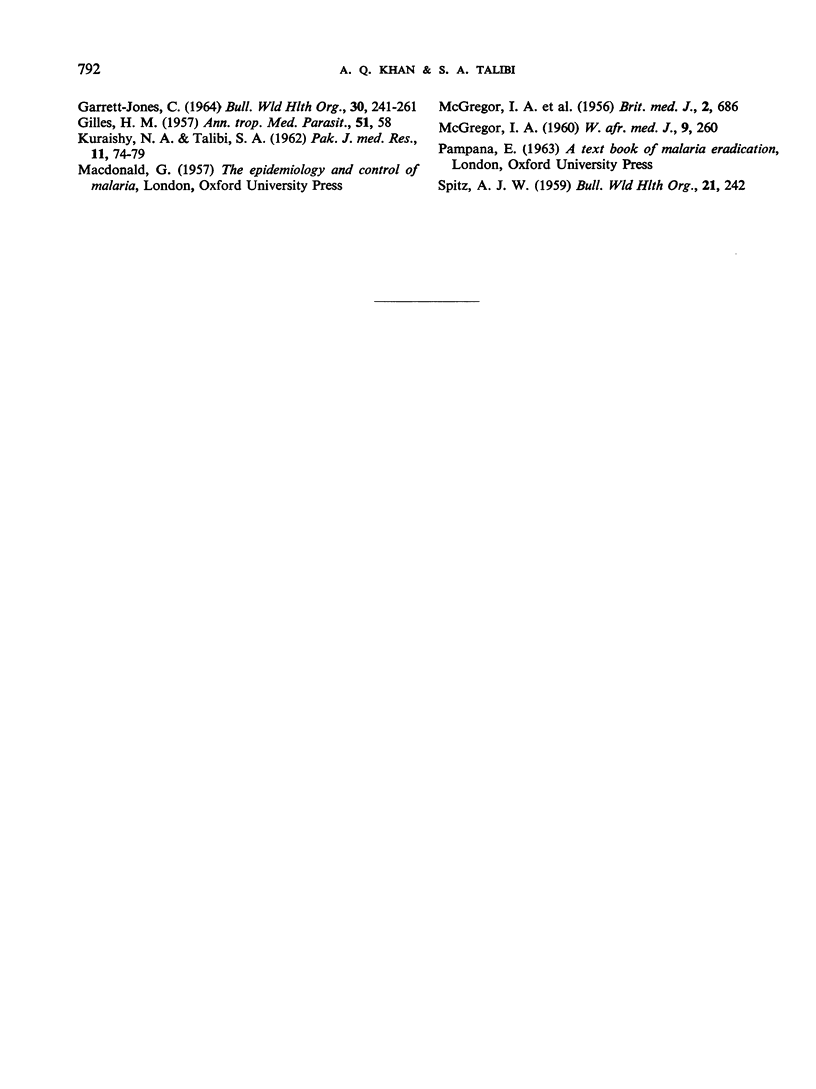
Selected References
These references are in PubMed. This may not be the complete list of references from this article.
- CANNON D. S. Malaria and prematurity in the western region of Nigeria. Br Med J. 1958 Oct 11;2(5101):877–878. doi: 10.1136/bmj.2.5101.877. [DOI] [PMC free article] [PubMed] [Google Scholar]
- COVELL G. Congenital malaria. Trop Dis Bull. 1950 Dec;47(12):1147–1167. [PubMed] [Google Scholar]
- DAVIDSON G., DRAPER C. C. Field studies of some of the basic factors concerned in the transmission of malaria. Trans R Soc Trop Med Hyg. 1953 Nov;47(6):522–535. doi: 10.1016/s0035-9203(53)80005-2. [DOI] [PubMed] [Google Scholar]
- GARRETT-JONES C. THE HUMAN BLOOD INDEX OF MALARIA VECTORS IN RELATION TO EPIDEMIOLOGICAL ASSESSMENT. Bull World Health Organ. 1964;30:241–261. [PMC free article] [PubMed] [Google Scholar]
- GILLES H. M. The development of Malarial infection in breast-fed Gambian infants. Ann Trop Med Parasitol. 1957 Mar;51(1):58–62. doi: 10.1080/00034983.1957.11685795. [DOI] [PubMed] [Google Scholar]
- MCGREGOR I. A., GILLES H. M., WALTERS J. H., DAVIES A. H., PEARSON F. A. Effects of heavy and repeated malarial infections on Gambian infants and children; effects of erythrocytic parasitization. Br Med J. 1956 Sep 22;2(4994):686–692. doi: 10.1136/bmj.2.4994.686. [DOI] [PMC free article] [PubMed] [Google Scholar]
- SPITZ A. J. Malaria infection of the placenta and its influence on the incidence of prematurity in eastern Nigeria. Bull World Health Organ. 1959;21:242–244. [PMC free article] [PubMed] [Google Scholar]


